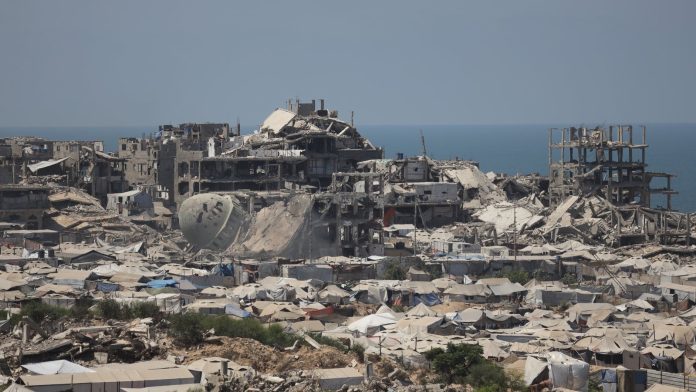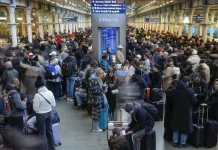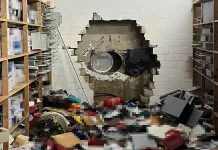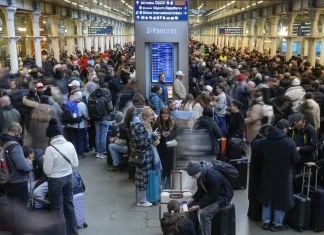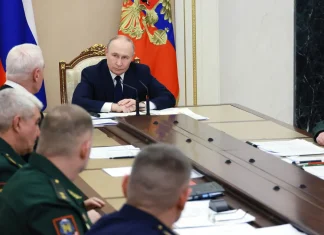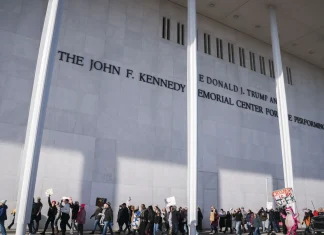Gaza’s Quiet Crisis: The Human Cost Behind the Headlines
In the tender early hours of the morning, amidst the cold whispers of dawn, something harrowing was unfolding over the skies of Gaza. Israeli airstrikes ripped through the fragile calm, leaving tents—fragile shelters for those displaced—reduced to rubble and despair. At least 25 lives were claimed that day, Palestinians seeking only refuge and food caught in the crossfire of a long-standing conflict that seems more entrenched and tragic with each passing moment.
Where does one begin to capture the grief embedded in the debris and dust of southern Gaza’s Khan Younis? This area, now home to hundreds of thousands of internally displaced Gazans, has transformed into a sprawling tent city. Families, uprooted from their homes, huddle together in what little protection they can muster. Yet, those places of refuge became targets—
“We thought these tents were safe havens,” murmured Layla, a mother of three who lost her neighbor in the strikes. “But the sky offers no mercy here.”
Over half of those killed in Khan Younis were women and children, faces full of innocent hopes extinguished prematurely. Just kilometres away, in the north near the Zikim crossing—a lifeline for humanitarian convoys—five more lives were stolen by gunfire as desperate civilians sought aid. The scene near the UN and other agency checkpoints, normally places emblematic of relief, turned violent and deadly.
The Shadow of Famine Looming Large
One day before these tragic strikes, a damning report from the Integrated Food Security Phase Classification (IPC)—the world’s foremost authority on food crises—sent shockwaves across international corridors. For the first time ever in the Middle East, IPC declared that Gaza City’s 2 million residents are gripped by famine.
Famine is not just a word here; it is a spectral reality crawling, invisible and unstoppable, through the winding alleys of Gaza’s neighborhoods. To put it in staggering numbers: nearly half a million people, a quarter of Gaza’s population, suffer from catastrophic hunger that threatens to snuff out their lives like fragile candles in the desert wind.
Fatima, a volunteer at a local charity kitchen in Gaza City, describes the scene with quiet sorrow:
“Mothers come with empty pots, children with hollow eyes. There is no dignity left when the hunger is this deep.”
Famine, compounded by a brutal blockade lasting over two years, displacement on a massive scale, and the dismantling of Gaza’s agricultural infrastructure, challenges the very essence of survival. The scarcity of food isn’t simply a facet of war—it has become a weapon wielded with cold precision.
A Delicate Balance of Aid and Hostilities
International aid efforts, still reeling from challenges of access and security, seem a fragile lifeline at best. Relief agencies have struggled to get sufficient food supplies into Gaza, despite Israel’s limited easing of some restrictions and newly sanctioned aid corridors. The Gaza Humanitarian Foundation, backed by the US, has tried to usher in aid supplies, but the road to relief has been fraught with complications—
- Chaotic scenes at aid distribution points
- Security threats causing delays and dangerous encounters
- Reports of Israeli forces firing warning shots at civilians seeking help
Ahmed, a driver who delivers humanitarian aid, recalls one such incident:
“People were pushing forward, desperate to get a piece of bread or a bottle of water. Suddenly, gunfire echoed. It was terrifying. We’re helping these people survive, and yet, survival feels impossible.”
Israel’s defense asserts that warning shots are intended to shield troops from perceived threats, but for many Gazans, this adds another layer of fear and uncertainty under skies that should bear the impartial light of day.
Political Struggles Amidst Human Suffering
Israeli Prime Minister Benjamin Netanyahu’s office swiftly dismissed the IPC’s famine declaration as “an outright lie,” painting it instead as propaganda from Hamas, the governing authority in Gaza. They blame Hamas for the plight of hostages and insist that sufficient aid has been permitted during the ongoing conflict.
Yet, the humanitarian narrative told by aid workers, local families, and independent agencies tells a different story—one of a people trapped between a rock and a hard place, craving not political victories but simple human necessities: food, safety, dignity.
The ground offensive in Gaza City is reportedly imminent, with Israeli forces securing the city’s outskirts and controlling strategic neighborhoods like Zeitoun. The very mention of an invasion on Gaza City sends ripples of anxiety through its streets. Médecins Sans Frontières (Doctors Without Borders), operating clinics on the edge of the city, notes a surge in fleeing families seeking refuge from relentless bombardments.
“Our clinics are overwhelmed,” said Dr. Kareem Hassan, an MSF physician. “Every day we treat more victims, more displaced. Our own staff are forced to move frequently just to stay safe.”
The Wider Lens: What This Means for the World
Gaza is a microcosm of an ever-widening global challenge—how do we protect civilians amid conflicts, where humanitarian catastrophes spiral into crises of hunger, displacement, and loss of hope? The faces behind these numbers—women cradling children, elders leaning on weary shoulders—are reminders that war’s true cost extends far beyond borders or political calculations.
When aid is politicized and access restricted, we must ask ourselves: What does it mean for humanity if we allow entire cities to perish from starvation? How much suffering will it take for the global community to shake off paralysis and act decisively?
The story of Gaza—its tents shattered by strikes, its kitchens struggling to feed famished mouths, its people haunted by displacement and fear—is more than news. It’s an urgent call to empathy, to awareness, and to action.
Where Do We Go From Here?
As readers far removed from Gaza’s strip of land, it’s tempting to feel powerless in the face of catastrophe. But power lies in understanding, in raising voices, and fostering sustained international pressure for ceasefires and aid corridors. It lies in demanding accountability, and in insisting that this strangled enclave sees the light of peace.
For those born into conflict, each passing day is a precious gift contested by violence and hunger. And for the rest of the world, their fate should not be a distant abstract tragedy but a sobering reminder of the work we have to do—chasing hope, delivering relief, and re-centering humanity in the heart of geopolitics.
Have you paused recently to ask what famine looks like through the eyes of a child in Gaza? To imagine what it means to find food, shelter, and safety not as rights, but unreachable dreams? In hearing stories like these, perhaps we find not despair, but fuel for compassion and change.
The tents may fall, the bombs may fall, but empathy must rise—until peace and plenty return to Gaza’s weary streets.


